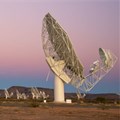South Africa looks to space for economic growth

The departments have worked collaboratively over the past three years to draft the National Communications Satellite Strategy that addresses critical issues of connectivity, technological sovereignty, and economic competitiveness.
Patrick Ndlovu, chairperson of the Sansa board, told the parliamentary portfolio committee that the vision is to shift South Africa from being a net consumer to a net producer and exporter of satellite technology and services.
“This is not just about technological advancement; it’s about transforming lives.”
“We are spending over R1.5bn annually on satellite services,” he explained, “but an investment of R4-R6bn could help us not only meet our needs but also export these services across the continent.”
By deploying a national communication satellite, the country aims to extend connectivity, enhance disaster response, and ensure secure national communications.
“This initiative will contribute to inclusive economic growth while ensuring South Africa’s technological sovereignty,” said Gugulethu Zwane, acting DSTI director general.
A matter of national security
“This project should be wholly supported, as it unlocks opportunities in the digital economy and positions South Africa as a leader in the satellite industry,” said Khusela Sangoni Diko, co-chairperson of the joint meeting.
Beyond saving on current satellite service expenditures, the strategy will stimulate local industries, create jobs, and drive technological advancements.
Recent feasibility studies, including one by Sentech in 2016, estimate that a national satellite could break even within seven years of its launch.
The strategy outlines a phased approach comprising upstream, midstream, and downstream components:
Upstream: Satellite design and specification by Sansa and Sentech.
Midstream: Satellite launch and commissioning, spectrum management, and signal distribution by Sansa, Sentech, and Icasa.
Downstream: IT infrastructure for e-government services, led by the State Information Technology Agency (Sita).
Regulatory and operational challenges
While the project’s potential is clear, challenges include funding, access to orbital slots, and capacity-building.
The degraded state of South Africa’s allocated orbital slot further complicates matters, requiring renegotiations with international bodies such as the International Telecommunication Union (ITU).
To address these, the draft strategy has undergone a rigorous review process, including input from independent experts, key government departments, and the social-economic impact assessment (SEIAS) required by the Presidency.
The next steps include presenting the strategy to government clusters, followed by public consultation and final cabinet approval.
Local competition
“Countries like Angola and Egypt have already launched national satellites, reaping benefits in connectivity and technological independence, South Africa cannot afford to delay” Sansa CEO Humbulani Mudau told the committee.
The strategy also aligns with the country’s broader National Development Plan and Sustainable Development Goals (SDGs).
“We must remain ambitious and act decisively to ensure this critical infrastructure becomes a reality,” concluded meeting co-chair Tsakani Shiviti.
This project has the potential to transform South Africa’s technological landscape, fostering innovation and economic growth while asserting its sovereignty in the space sector.
























































